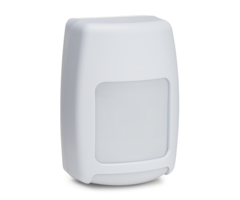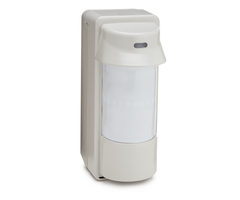How Does a Motion Detector Work?
A motion detector will typically work using one of two methods. These methods are passive infrared (PIR) technology and microwave doppler radar detection. Some motion sensors utilize both of these detection technologies, in what is referred to by many security experts as a dual-tech setup.
A passive infrared (PIR) sensor is the most common type of motion detector. This involves having the sensor look out for the infrared energy that is given off by an intruder. Whenever the sensor detects a significant change in infrared energy, the device will activate and trigger an alarm on the system. Since PIR motion detectors are relatively common, it is very easy for users to find the perfect sensor for their needs. Some of the special types pf PIR sensors include outdoor sensors, pet-immune sensors and long-range sensors.
A user can adjust the sensitivity of a PIR motion sensor by increasing or decreasing the device's pulse count. A higher pulse count will require a larger change in infrared energy for the device to activate, thereby making the motion sensor less sensitive. Likewise, lowering the pulse count for a motion sensor will make the device less sensitive, as a smaller change in infrared energy will be needed to activate the device. Users can adjust this setting based upon their security needs and the location of the sensor. However, making a PIR motion sensor too sensitive may cause false alarms from inanimate objects, such as a moving ceiling fan or falling leaves.
A microwave sensor is somewhat less common than a PIR sensor. Microwave detection works by having the sensor continuously send out microwave signals. Based upon the objects that are present in the room, some of these signals will bounce back at the motion sensor in a very specific way. When there is a change in the signals that bounce back at the sensor, the device will assume that motion is present, and an alarm will be triggered. This specialized detection process is also known as the Doppler's Effect.
A standalone microwave motion sensor is rare, as most microwave sensors will include both microwave and PIR detection in a dual-tech setup. When using a dual-tech setup, both the microwave radar and the PIR sensor must be triggered in order for an alarm to occur. This can be a great way to prevent false alarms. Unfortunately, if an intruder is able to fool either the PIR sensor or the microwave radar, then the device will not activate, and an alarm will not occur. However, fooling either of these detection methods is very difficult, making dual-tech motions a reliable security solution for many users.
Did you find this answer useful?
We offer alarm monitoring as low as $10 / month
Click Here to Learn MoreRelated Products



Related Categories
- Answered



